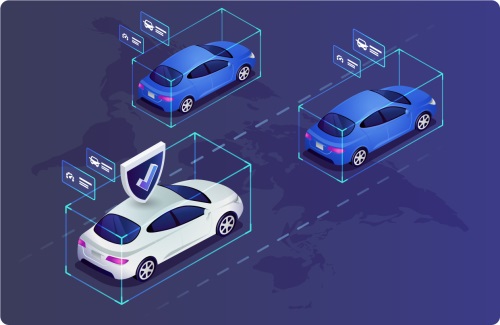Telematics and Usage-Based Insurance: A Digital Shift

Telematics refers to the integration of telecommunications and informatics for monitoring and transmitting data. In the context of insurance, telematics involves the use of devices installed in vehicles to collect and transmit real-time data on driving behavior. These devices, often referred to as telematic devices or black boxes, gather information such as speed, acceleration, braking patterns, and the time of day a vehicle is in use.
The primary goal of telematics is to provide insurers with a more accurate and personalized understanding of an individual's driving habits. By analyzing this data, insurers can better assess risk and offer more tailored coverage to policyholders. The result is a shift from traditional risk assessment methods to a more dynamic and data-driven approach.
The Rise of Usage-Based Insurance (UBI)
Usage-Based Insurance (UBI) is a direct outcome of the insights derived from telematics data. Unlike traditional insurance models that rely on generalized risk profiles, UBI allows insurers to customize premiums based on individual driving behavior. Policyholders are no longer treated as part of a broad category; instead, their premiums are determined by how, when, and where they drive.
The key components of UBI include:
1. Behavioral Data: Telematics devices capture data on various driving behaviors, such as speeding, hard braking, and smooth acceleration. Insurers analyze this data to gain insights into the risk profile of each policyholder.
2. Pay-As-You-Drive (PAYD): PAYD is a UBI model where premiums are directly tied to the number of miles a driver covers. This approach is particularly appealing to those who drive less frequently or have alternative transportation methods.
3. Pay-How-You-Drive (PHYD): PHYD takes into account not only the distance covered but also the actual driving behavior. Safe drivers are rewarded with lower premiums, creating a system that incentivizes responsible driving.
Benefits for Policyholders
The digital shift towards telematics and UBI brings several benefits for policyholders:
1. Cost Savings: For responsible drivers, UBI can result in significant cost savings. By aligning premiums with actual driving behavior, policyholders can enjoy lower rates that reflect their safe practices on the road.
2. Personalized Coverage: Traditional insurance models often provide one-size-fits-all coverage. With UBI, coverage is tailored to the individual, ensuring that policyholders pay for what they need based on their unique driving habits.
3. Safety Incentives: Knowing that their driving behavior directly affects premiums, policyholders are incentivized to adopt safer habits. This not only benefits the individual but contributes to overall road safety.
4. Transparency: Telematics devices provide transparency into how premiums are calculated. Policyholders can access their driving data, allowing them to understand the factors influencing their insurance costs.
Challenges and Concerns
While the digital shift towards telematics and UBI holds great promise, it is not without challenges and concerns:
1. Privacy Issues: Collecting and transmitting personal driving data raise privacy concerns. Insurers must strike a balance between utilizing data for risk assessment and respecting the privacy of policyholders.
2. Data Security: Telematics devices are vulnerable to hacking, raising concerns about the security of the sensitive data they collect. Insurers must implement robust cybersecurity measures to protect both the data and the integrity of the system.
3. Consumer Acceptance: Some individuals may be hesitant to adopt telematics devices due to concerns about privacy or a perceived lack of control over their insurance premiums. Overcoming these barriers requires effective communication and education about the benefits of UBI.
The Future of Telematics and UBI
The digital shift in the insurance industry is set to continue, with telematics and UBI playing a central role in shaping the future. As technology advances, we can expect further refinements in data collection methods, more sophisticated analytics, and an even greater emphasis on personalized insurance solutions.
Insurers embracing this digital shift are likely to gain a competitive edge by offering innovative products that resonate with the evolving needs of consumers. Policyholders, in turn, stand to benefit from fairer premiums, increased safety incentives, and a more transparent insurance experience.




